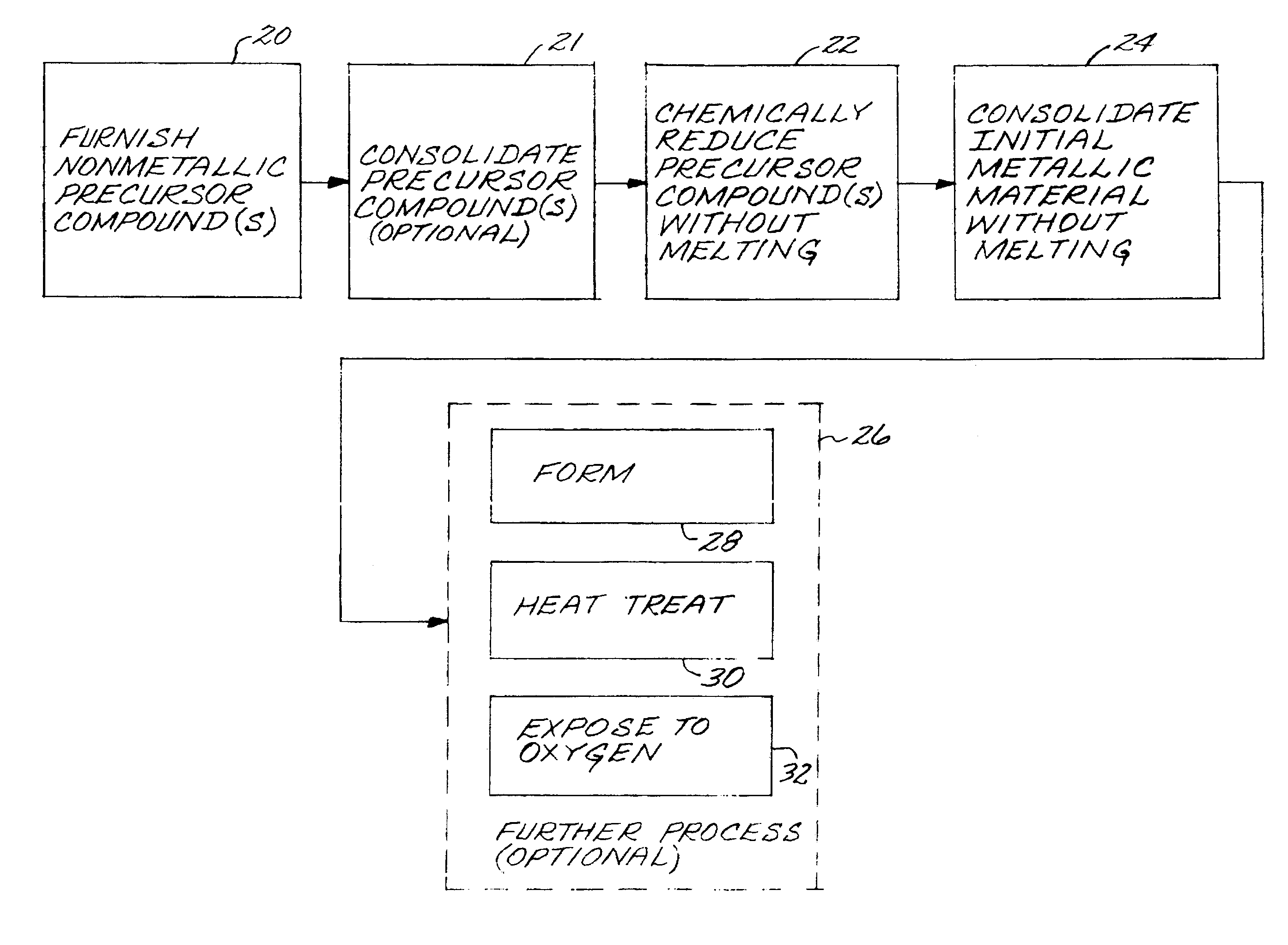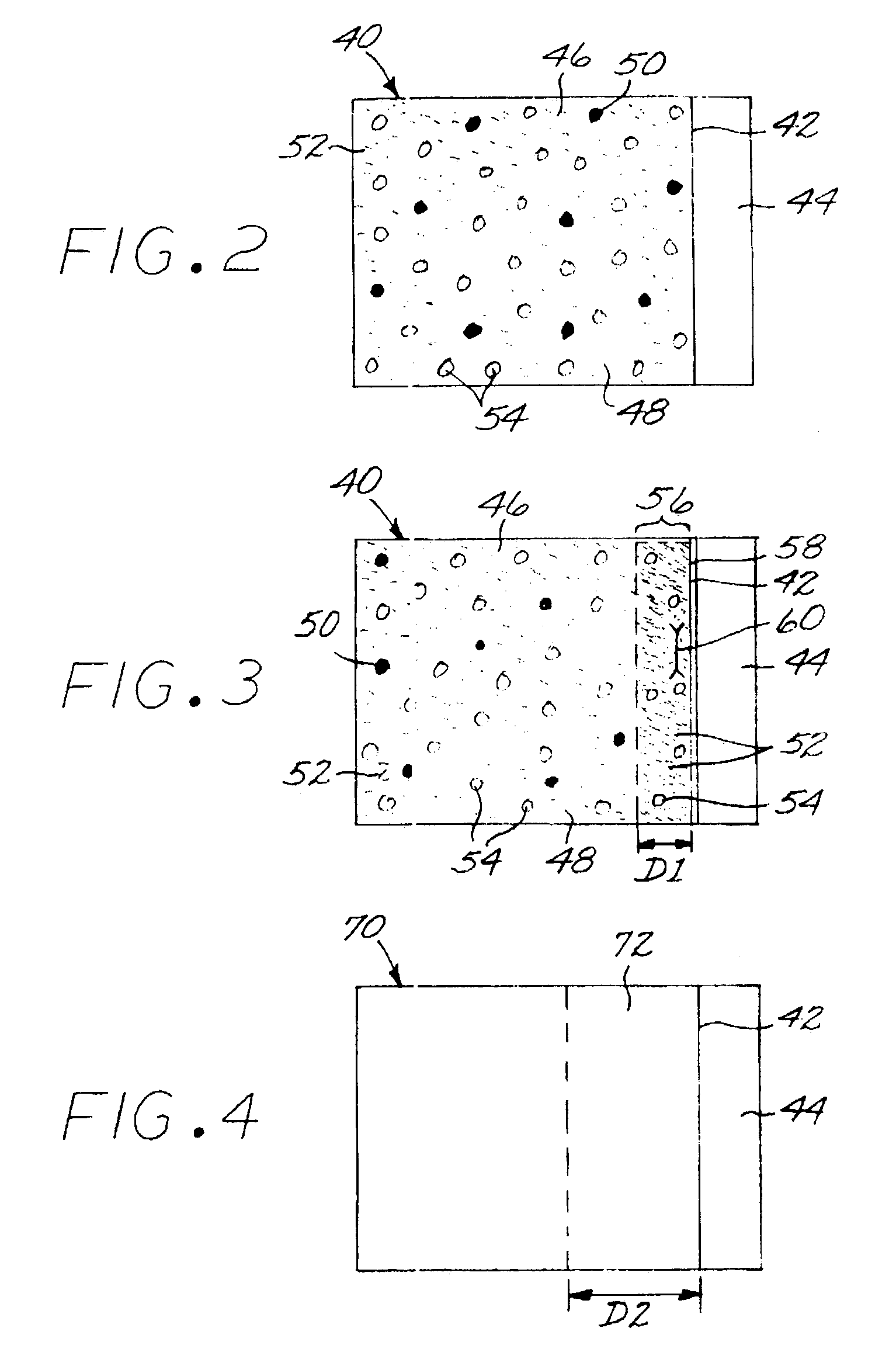Method for producing a titanium-base alloy having an oxide dispersion therein
a technology of oxide dispersion and titanium-base alloy, which is applied in the direction of coatings, etc., can solve the problems of reducing the properties and reducing the production efficiency, and achieve the effects of low defect incidence and good environmental resistan
- Summary
- Abstract
- Description
- Claims
- Application Information
AI Technical Summary
Benefits of technology
Problems solved by technology
Method used
Image
Examples
Embodiment Construction
[0027]FIG. 1 depicts a preferred method for producing a metallic article made of constituent elements in constituent-element proportions. At least one nonmetallic precursor compound is furnished, step 20. All of the nonmetallic precursor compounds collectively contain the constituent elements in their respective constituent-element proportions. The metallic elements may be supplied by the precursor compounds in any operable way. In the preferred approach, there is exactly one non-oxide precursor compound for each alloying element, and that one precursor compound provides all of the material for that respective metallic constituent in the alloy. For example, for a four-element metallic material that is the final result of the process, a first precursor compound supplies all of the first element, a second precursor compound supplies all of the second element, a third precursor compound supplies all of the third element, and a fourth precursor compound supplies all of the fourth elemen...
PUM
| Property | Measurement | Unit |
|---|---|---|
| Percent by mass | aaaaa | aaaaa |
| Temperature | aaaaa | aaaaa |
| Weight | aaaaa | aaaaa |
Abstract
Description
Claims
Application Information
 Login to View More
Login to View More - R&D
- Intellectual Property
- Life Sciences
- Materials
- Tech Scout
- Unparalleled Data Quality
- Higher Quality Content
- 60% Fewer Hallucinations
Browse by: Latest US Patents, China's latest patents, Technical Efficacy Thesaurus, Application Domain, Technology Topic, Popular Technical Reports.
© 2025 PatSnap. All rights reserved.Legal|Privacy policy|Modern Slavery Act Transparency Statement|Sitemap|About US| Contact US: help@patsnap.com



